As the temperature drops, we aren’t the only ones seeking shelter from the cold. There are several types of rodents in Wisconsin that are scoping out your home as their new refuge from winter. Here are some ways of identifying what type of rodent you are dealing with, the signs that they have taken up residency in your home, and how to prevent them from getting in.
Mice in Your Home
When you suspect you have mice in your home, it is usually one of two species: the house mouse or the deer mouse.
House Mouse
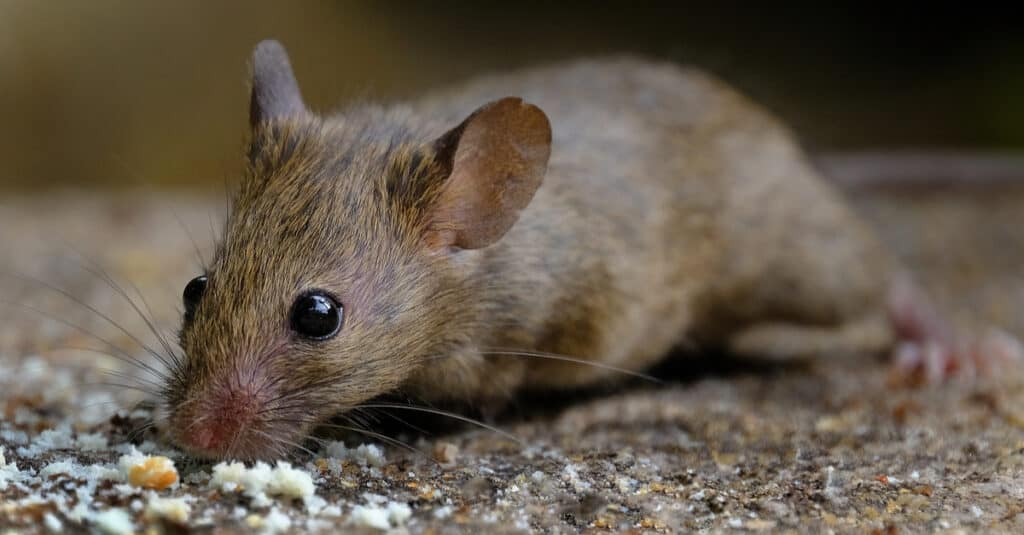
Since they’re active all year, you could potentially see house mice in your home at any time.
©Paulpixs/Shutterstock.com
The house mouse is active all year, so it may be invading your home at any time. It is no more than 1.5 ounces in weight and is usually 5-8 inches in length, measured nose to tail. The house mouse varies in coloring from light gray to light brown or black. Its snout is more pointed, and it has large, rounded ears.
Deer Mouse
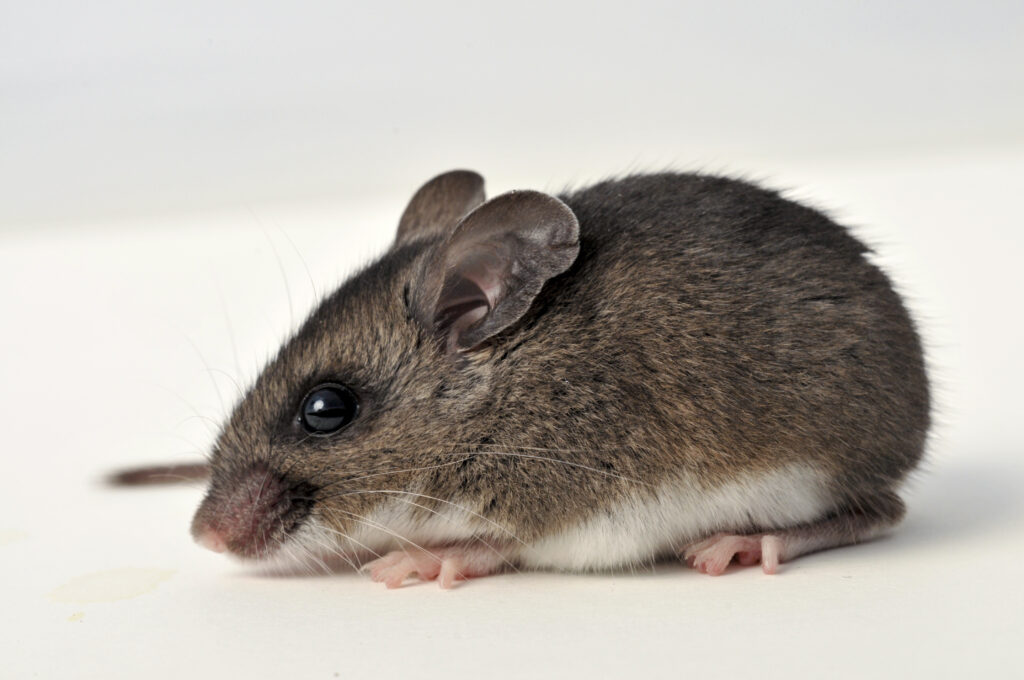
If you live in a rural area, you’re more likely to see deer mice.
©Close Encounters Photo/Shutterstock.com
The deer mouse prefers wooded areas or fields, so it isn’t common in urban areas, unless the home is adjacent to a field. The deer mouse has a white underbelly with sandy or dark brown fur. On the smaller side, a deer mouse is usually less than six inches long, from nose to tail. It also has a pointed snout and rounded ears, but a big indicator is its tail. The tail is bi-colored and hairless; whereas, the house mouse has a hairy tail. Read more about the differences between a house mouse and a deer mouse.
Signs of These Rodents in Your Wisconsin Home
These mice are nocturnal and have very flexible skeletons, so they can squeeze through the tiniest holes to get into your home. Here are some signs that you have mice roommates:
- Mouse Poop — Mice will leave 50-80 little droppings a night. The droppings are granular in shape, almost like black rice. If you see trails of droppings along your floorboards or food cabinets, this is a sure sign.
- Nests — These mice will shred magazines, cardboard boxes, newspapers, or insulation to make a soft nest for their babies. Look for signs of chewing and shredding, or examine areas in which they might nest. Any quiet, enclosed space like drawers, cavities in the floor boards, or holes in the drywall are safe bets for nests.
- Ammonia Smell — These mice pee incessantly, which smells strongly like ammonia. The more intense the smell, the more likely its an area frequented by mice.
How to Prevent a Mouse Infestation
- Make sure that all cracks and holes along the outside of your house is sealed or repaired. The same goes for gaps in door or window frames.
- Store all food in glass or metal containers. Mice are looking for an easy, free meal, but an impenetrable pantry is a helpful deterrent.
- Mice repellent spray or electronic mice repellent has little scientific evidence of working, according to a study by the University of Nebraska-Lincoln. Your best bet is to invest in mouse proofing and to call a professional to help when rodents in Wisconsin overrun your home.
Rats in Your Home
Moving on to rats, the Norway rat and roof rat are the most common species to squeeze into your house uninvited.
Norway Rat
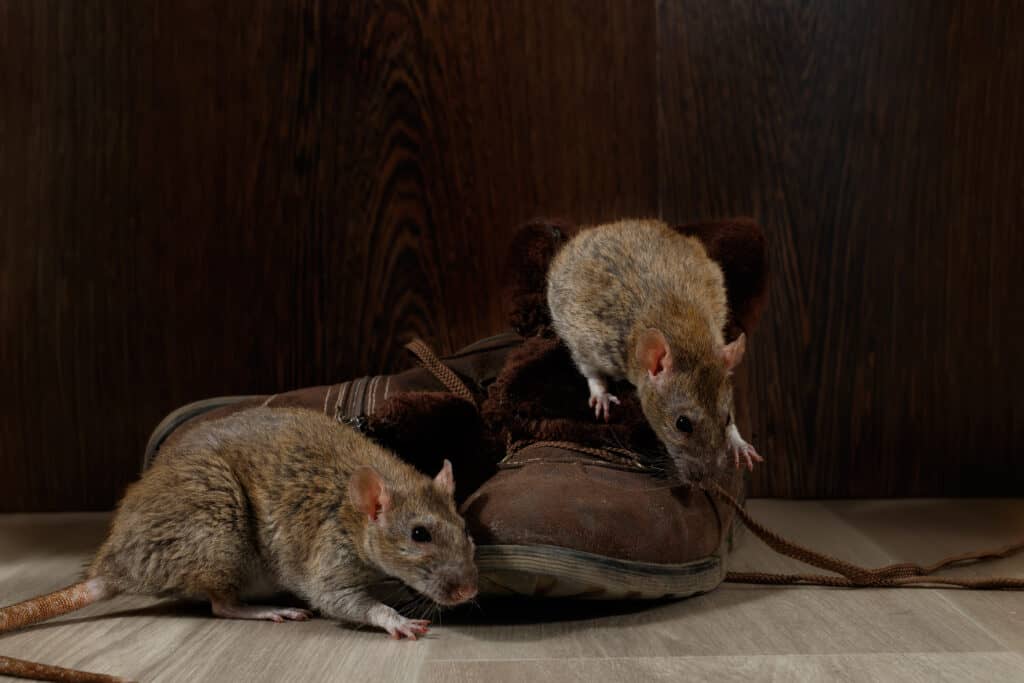
If they have the chance, Norway rats will live in groups growing to hundreds of members, called colonies.
©torook/Shutterstock.com
Ranging from 7-10 inches long, the Norway rat has a blunt nose, tiny ears, and small eyes. Its fur is coarse, ranging from light brown to dark brown in hue. Unlike mice, the Norway rat’s tail is shorter than it body, hairless, and scaly in texture.
Roof Rat
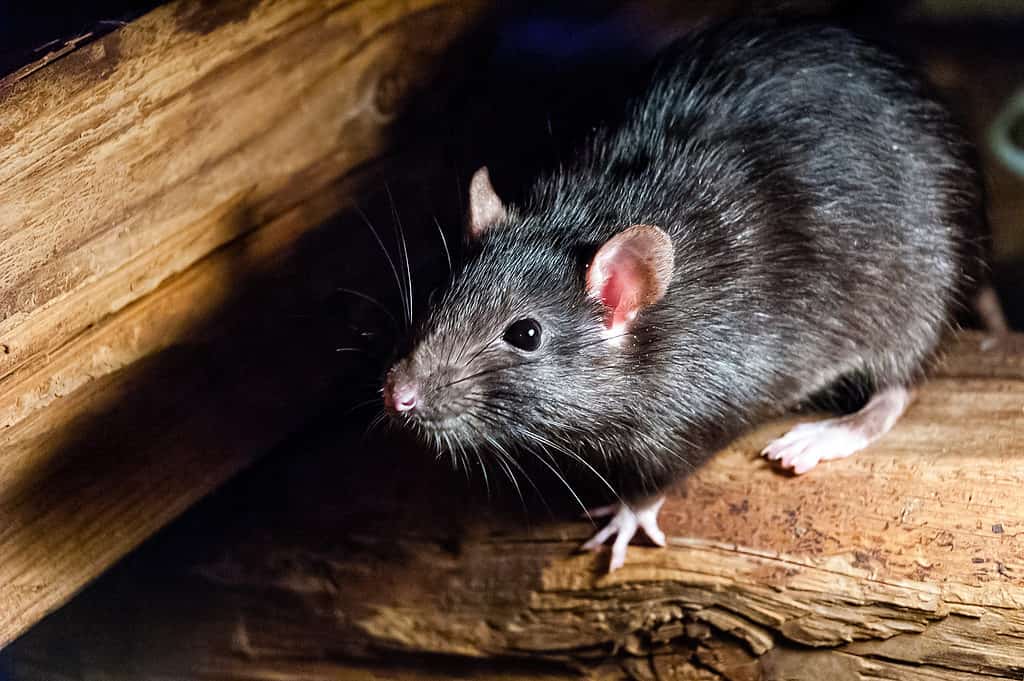
Their dark brown or black fur distinguishes roof rats from others.
©Carlos Aranguiz/Shutterstock.com
A roof rat’s complexion is darker, with dark brown or black fur. It has a much longer tail than the Norway rat, often stretching double the length of its body. A fantastic climber, the roof rat will prefer attics and rafters as a home. It has a more pointed nose than the Norway rat, big eyes, and large rounded ears.
Signs of Rat Rodents in Your Wisconsin Home
- Rat Poop — Again, look for the feces. Norway rats have long, rounded feces that are peanut-shaped. Roof rats excrete long feces with pointed ends, resembling sunflower seeds.
- Grease Spots — These rats use routes along walls and skirting boards, and the grease and soil from their bodies leave dark smudges along their frequented trails.
- Footprints — Look for footprints or tail streaks on dusty floor surfaces. To track how new the activity is, sprinkle flour in the same spot and see if fresh footprints appear the next day.
How to Prevent a Rat Infestation
- Like with mice, make sure all holes and gaps along the outside of your house are plugged up. Pay careful attention to your roof line for any evidence of chewing where a roof rat might want to get in.
- Seal up all food and water sources in your home. The Norway rat especially likes to nest close to a water source.
- Prevent nesting sites outside your home. Make sure all garbage is sealed in thick bags, and any abandoned cars or woodpiles are at least 100 feet away from your house. Keep your lawn trimmed, and clear all brush around your home.
Squirrels in Your Home
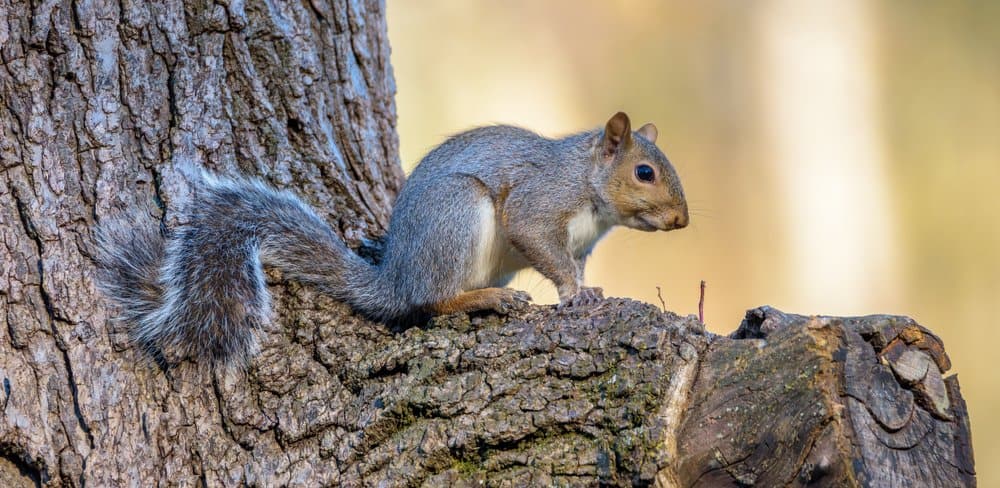
Don’t discredit a
squirrel
‘s ability to invade your home.
©Sterling E Thompson/Shutterstock.com
Another rodent in Wisconsin that wants to invade your cozy home is the gray squirrel. It measures a total of 18-21 inches long, tail included. The squirrel got its name from its gray fur coat, but its belly and ear tufts are stark white. Both male and female gray squirrels are generally the same size.
Signs of Squirrel Rodents in Your Wisconsin Home
- Holes — Gray squirrels don’t have as flexible bodies as mice and rats, so if they can’t find a way in, they will make one. Attics are their spot of choice, so check the roof line and fascia for any holes.
- Scratching Sounds — If you are noticing strange sounds like scampering in your ceiling or incessant scratching, it’s a good chance that it’s the gray squirrel. They are loud, unwanted guests.
- Ceiling Spots — Signs of water damage on your ceiling…means that’s probably not water. If you have a nest of squirrels hanging in the attic, the build-up of feces and urine will seep through and cause bubbling or discoloration of your ceiling.
How to Prevent a Squirrel Infestation
- Trim tree branches that give gray squirrels a direct path to your roof. Cut all branches at least three meters away from your home.
- Gray squirrels have a powerful sense of smell, which can be used against them. Use intense scents like garlic, lemon, pepper, or peppermint to deter them.
- Keep bird feeders at least four meters from your home. Additionally, hang feeders on tall, free-standing poles away from trees to prevent squirrels from accessing it. If not suspended well, bird feeders are free buffets for gray squirrels, and your home is looking like a convenient nesting spot that’s next to reliable food.
Chipmunks in Your Home
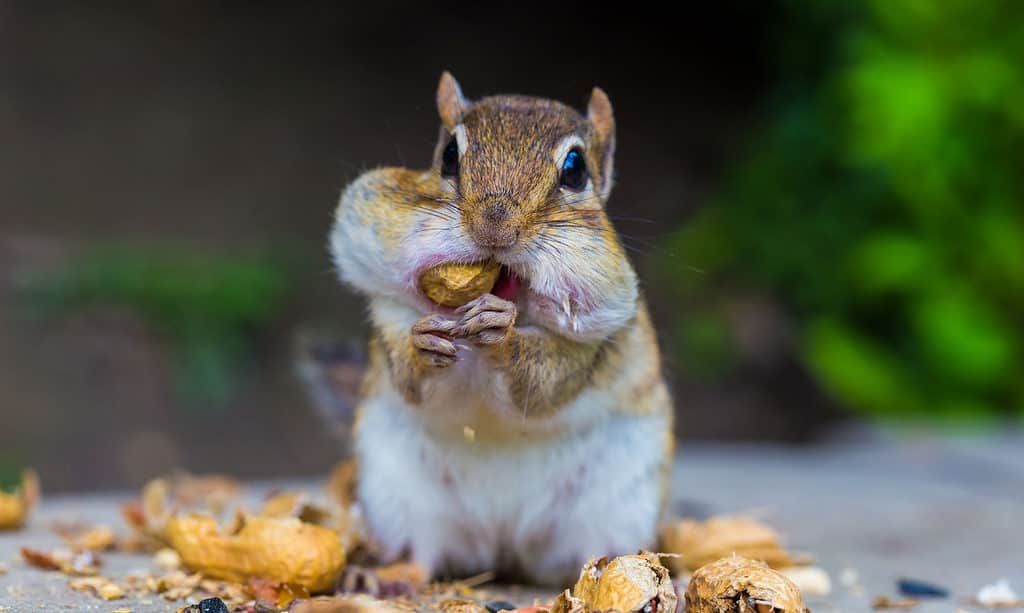
Like any other rodent, if they have a reason and the means, chipmunks might enter your home.
©colacat/Shutterstock.com
Chipmunks range from brown to beige in color with dark stripes along their backs. They have large front teeth which are perfect for cracking seeds and nuts, and they only grow to about four to seven inches in height. But, they are most known for their ability to stuff food into their cheek pouches!
Signs of Chipmunk Rodents in Your Wisconsin Home
- Scratching — Chipmunks are busy little creatures, so you will often hear their scratching and scurrying in the walls and ceiling.
- Holes in Siding — Entry-point holes from chipmunk chewing is not limited to the roof. They can squeeze through dryer vents, gaps where piping enters your house, or simply through a hole in the door frame.
- Squeaks — Listen for the high-pitched chirping of chipmunks. It sounds like “chip, chip” or “chuck, chuck,” similar to a bird call.
How to Prevent a Chipmunk Infestation
- Like all the other rodents in Wisconsin, chipmunks are looking for holes or gaps in your home. Sealing up your house nice and tight will go a long way toward prevention.
- Get an L-shaped footer installed around your patio to prevent these rodents from burrowing under and into your home.
- Predator urine sprayed around your home’s foundation will act as a powerful deterrent. You can buy fox or coyote urine at most home improvement stores.
In Conclusion
Many of the rodents in Wisconsin find your home as comfortable as you do. But, you don’t have to share it with them! Really invest in sealing up your siding, door frames, and fascia to make sure none of these rodents can get in. And, you should call a professional if your rodent infestation gets out of hand!
The photo featured at the top of this post is © Landshark1/Shutterstock.com
Thank you for reading! Have some feedback for us? Contact the AZ Animals editorial team.







